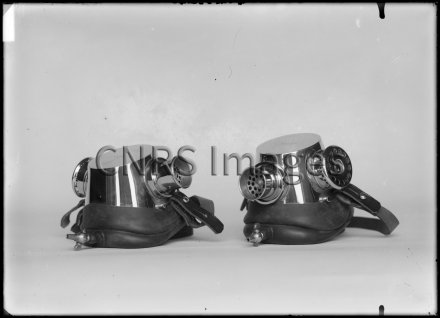Production year
1922

© Fonds historique / CNRS Images
19000001_0381
Masks photographed on October 10th, 1922. René Legendre’s and Maurice Nicloux’s mask was shaped like a cone, resembling those used in anesthesia. Its purpose was to assure pulmonary ventilation by using pure oxygen. Its base allowed the mask to rest fully flat, so that if he was laid down correctly, the suffocating patient’s face could simply be affixed to the mask in order to adhere to it. The mask was a durable piece of equipment composed of two large openings with circular thin rubber valves working in opposing directions. A metallic nozzle allowed for continuous breathing by connecting to a compressed oxygen cylinder with a rubber tube. Inside the tube, a rubber balloon valve acted as a regulator. The balloon valve adjusted the gas flow, inflating when the patient exhaled and partially deflating upon inhalation.
The use of media visible on the CNRS Images Platform can be granted on request. Any reproduction or representation is forbidden without prior authorization from CNRS Images (except for resources under Creative Commons license).
No modification of an image may be made without the prior consent of CNRS Images.
No use of an image for advertising purposes or distribution to a third party may be made without the prior agreement of CNRS Images.
For more information, please consult our general conditions
1922
Our work is guided by the way scientists question the world around them and we translate their research into images to help people to understand the world better and to awaken their curiosity and wonderment.